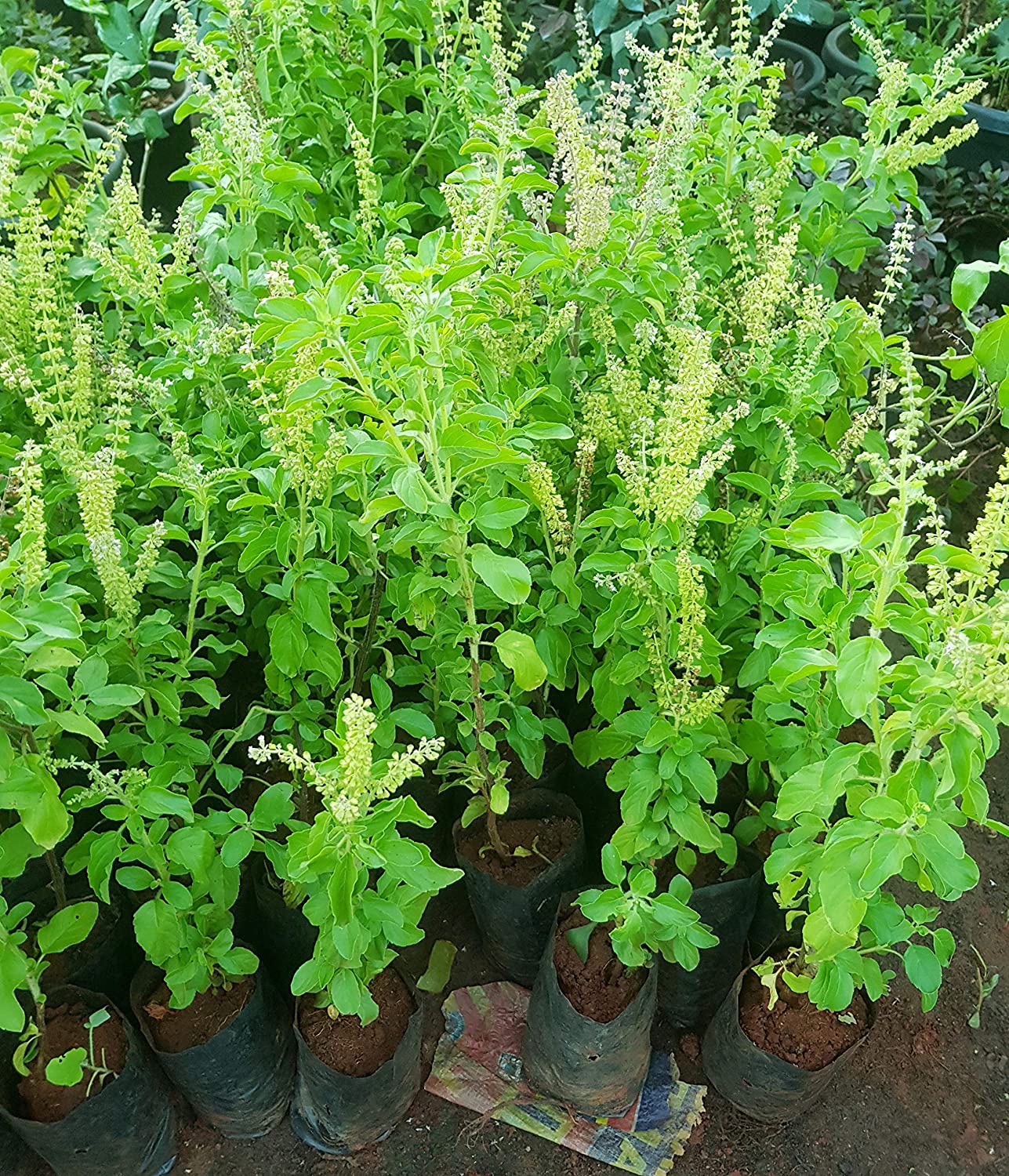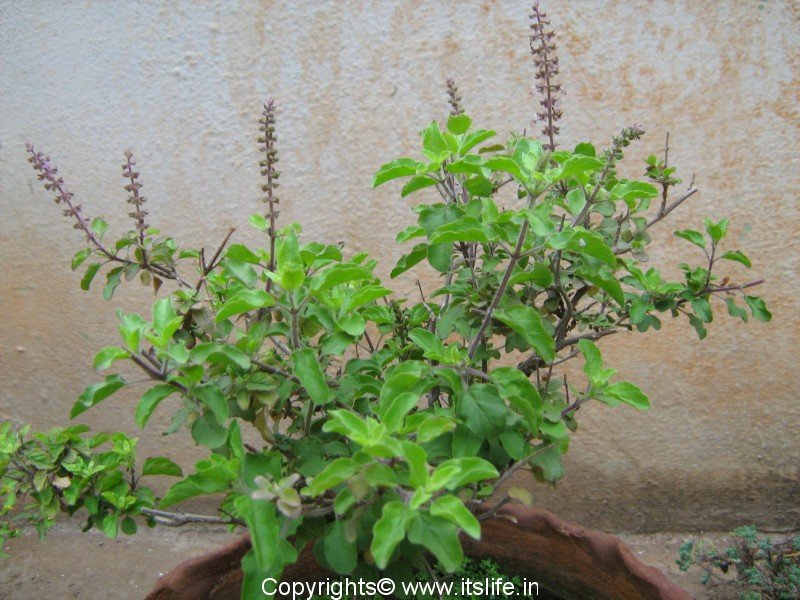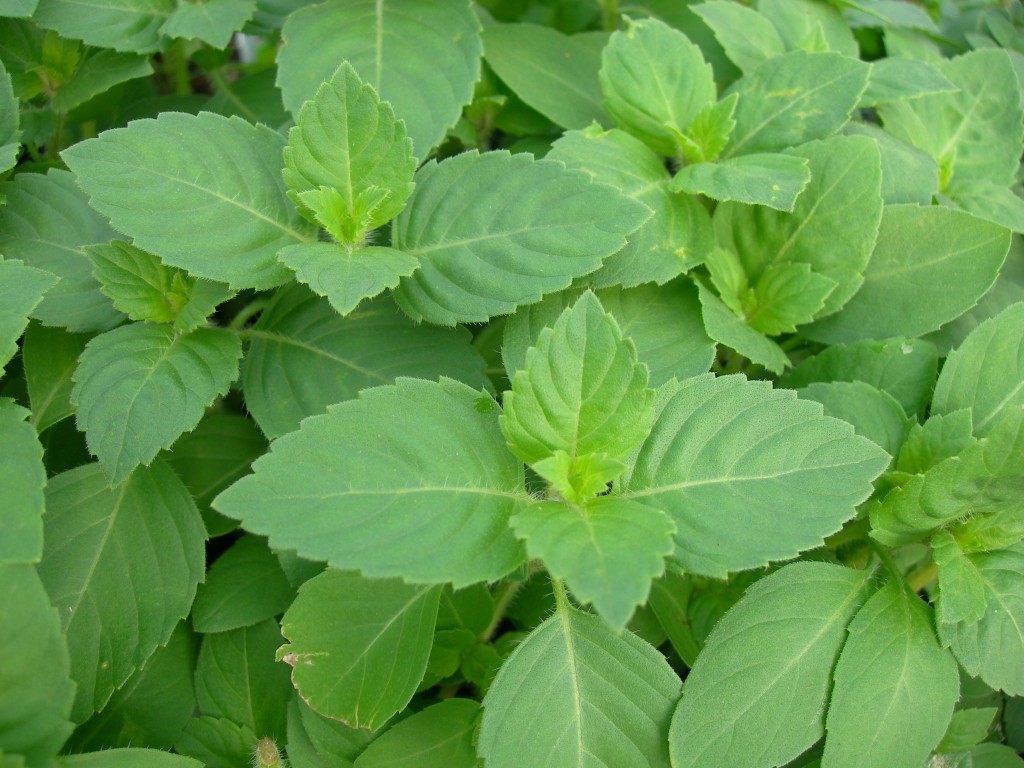.jpg)
Zrii_Italia Tulsi o Basilico Santo
The Devi Bhagavata Purana regards Tulsi as a manifestation of Goddess Lakshmi, the goddess of wealth and principal consort of Vishnu. Once upon a time, King Vrishadhvaja—a devotee of the god Shiva—banned worship of all other deities except for that of his patron god,Shiva.
.jpg)
Hindu Station Lakshmi Devi
Also known as 'Rama Tulsi', Sri or Lakshmi Tulasi, Ocimum tenuiflorum, Ocimum sanctum, the Green Leaf Tulsi is known for its cooling, mellower taste. This variety of Tulsi is found in China, Brazil, Eastern Nepal, as well as in Bengal, Bihar, Chatgaon, and the southern states of India. All the parts of the plant emit a strong aroma.
_Holy_Tulasi_plant_at_Kakinada_02.jpg)
File(Ocimum tenuiflorum) Holy Tulasi plant at Kakinada 02.jpg Wikimedia Commons
Tulasi ( Sanskrit: तुलसी, romanized : Tulasī ), or Vrinda ( holy basil) is a sacred plant in Hindu tradition. Hindus regard it as an earthly manifestation of the goddess Tulasi; she is regarded as the avatar of Lakshmi, and thus the consort of the god Vishnu. In another iteration, as Vrinda, she is married to Jalandhara.

Buy Earth AngelsLive Lakshmi Tulasi Rama Tulsi Holy Basil Ocimum tenuiflorum Green Herbal 1
Per some Hindu scriptures, Tulsi is an incarnation of the goddess Lakshmi. 3. A Tulsi plant releases ozone for a few hours a day. 4. The Tulsi plant has many medicinal uses and is called the "Queen of the Herbs". 5. Tulsi plant eliminates Vastu dosha and, to some extent, repels black magic also.

Pin by Radhe krishna saree tassels on Tulsi Goddess decor, Pooja room design, Tulsi vivah
In the scriptures , the Tulsi plant has been described as the form of Lakshmi, that is, where there is Tulsi, there is always the arrival of Lakshmi. It is a wonderful medicinal plant. By planting.

Sree Lakshmi Tulasi Auspicious Plant Exotic Flora
'Wedding of Tulasi'), [2] also called Tulasi Kalyanam, [3] is a Hindu festival, in which a symbolic ceremonial wedding takes place between a tulasi plant or holy basil (the personification of Lakshmi) and a shaligrama or an amla branch (the personifications of Vishnu ).

Tulasi Holy Basil Ocimum Sanctum Tulasi Pooja
Another Goddess, Lakshmi, is also closely associated with the Tulsi plant, and it is said that for those who wish to have a prosperous and peaceful life, this plant is an absolute must in the household. But there isn't just one kind of Tulsi, there actually are two; the lighter Rama Tulsi and the slightly darker Shyama Tulsi. It is the Shyama.

‘climate change’ ,derive benefit from medicinal plantTulsi Jharkhand State News
Sri Lakshmi's hair grew into a plant, become the famous Tulsi, an object of worship. An alternate version of this origin story is that Tulsi was the wife of Jalandhara, a water demon, who caused great suffering to people.

The Worship of Srimati Tulasi Devi
Lakshmi attempted to pacify both of them, but in the ensuing quarrel, the three of them had cursed each other to be incarnated on earth: Saraswati and Ganga became rivers, while Lakshmi incarnated as the tulasi plant. In a different legend from the Devi Bhagavata Purana, Lakshmi incarnated herself as Tulasi, the daughter of King Dharmadhvaja.

Four Types of Tulsi Plants in India
Holy basil doesn't make your pesto divine. It isn't even the same species of sweet basil used in your favorite Italian dishes. Holy Basil, also known as Tulsi, can be two different herbs, Ocimum gratissimum, or Ocimum tenuiflorum. It is a member of the mint family (Lamiaceae).The wonder herb holy basil, often called "The Queen of Herbs", is native to Southeast Asia and is commonly used.

Lakshmi tulasi AND Krishna tulasi YouTube
Tulasi is a sacred plant for Hindus, particularly the Vaishnavite sect. It is worshipped as the avatar of Lakshmi, [citation needed] and is often planted in courtyards of Hindu houses or temples to Hanuman. The ritual lighting of lamps each evening during Karthik includes the worship of the tulsi plant.

Tulasi salagrama vivaha Tulsi vivah, Tulsi, Tulsi plant
Tulsi Vivah Ocimum holy basil, ( Ocimum tenuiflorum ), flowering plant of the mint family ( Lamiaceae) grown for its aromatic leaves. Holy basil is native to the Indian subcontinent and grows throughout Southeast Asia.

तुलसी के फायदे Tulsi ke fayde Benefits of Tulsi Sonia Goyal YouTube
Tulsi Puja: The Tulsi plant is considered highly sacred. It is believed that the Tulsi plant is the abode of Goddess Lakshmi. In homes where Tulsi plant is present and regularly worshipped, the blessings of Goddess Lakshmi and Lord Vishnu are believed to reside. If you have planted a Tulsi plant in your home, it is essential to follow certain.

Imagem relacionada Thulasi Plant, Plant Care, Tulsi Plant Images, Plant Decor Indoor, Indoor
Tulasi is also known as Holy Basil, it is considered as the Queen of Herbs, it is an aromatic perennial plant in the Lamiaceae family. It is native to the Indian subcontinent and widespread as a cultivated plant throughout South-East Asia. It is cultivated for religious and traditional medicine purposes, and also for its essential oil.

Karthika dhwadhashi puja Goddess decor, Pooja room design, Tulasi plant
Tulasi is also known as Holy Basil, it is considered as the Queen of Herbs, it is an aromatic perennial plant in the Lamiaceae family. It is native to the Indian subcontinent and widespread as a cultivated plant throughout South-East Asia. It is cultivated for religious and traditional medicine purposes, and also for its essential oil.

Tulsi The Sacred plant of India Khichdi Online just about everything
Use a pair of sharp garden shears and cut a tulsi stem from an established plant. Remove all the flowers and most the leaves. Place the cutting in a glass of water on a sunny windowsill. Make sure it's kept continually warm, and change the water every few days to avoid mold or stagnation.